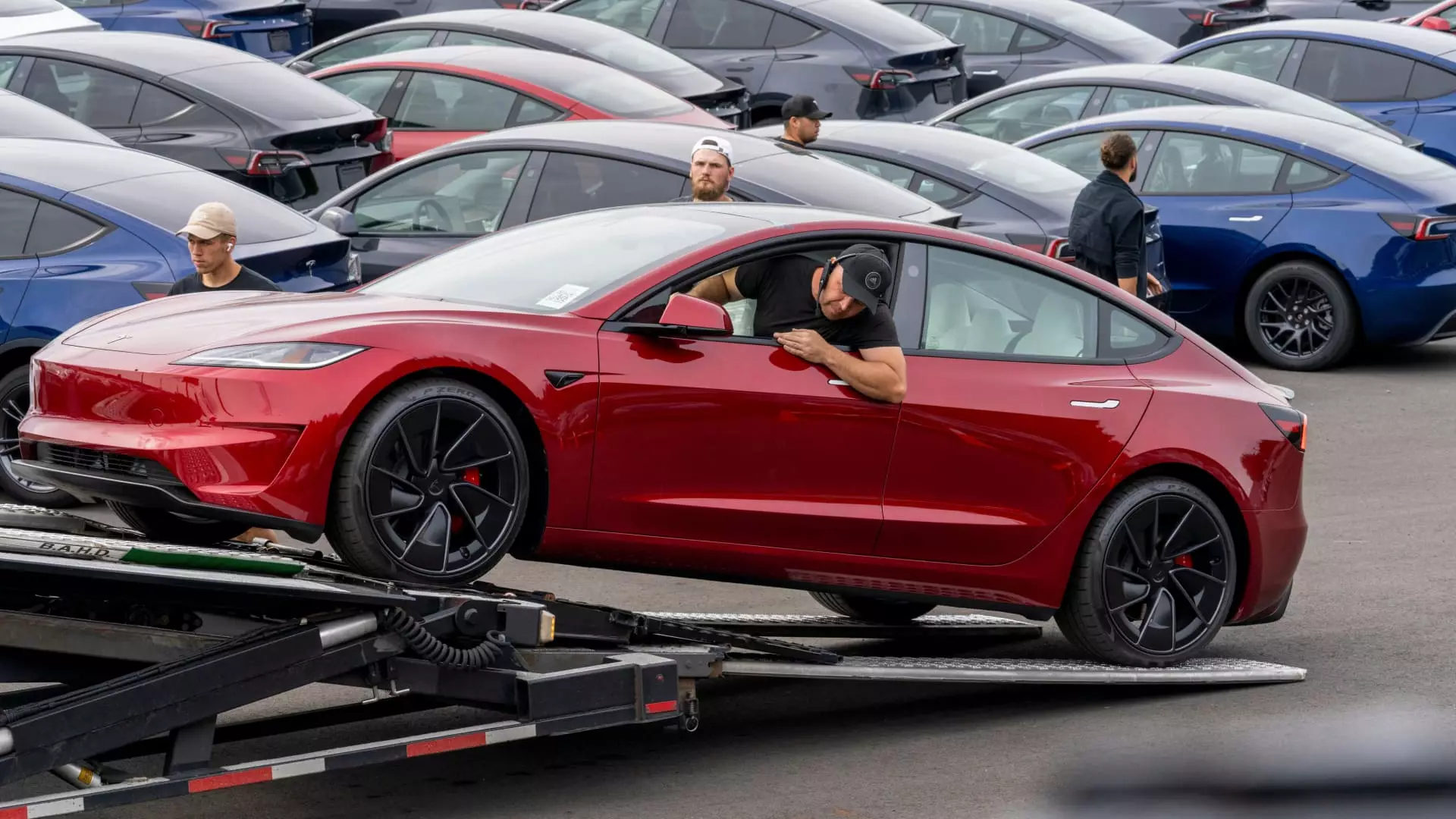Tesla, the leading name in the electric vehicle (EV) market, recently released its vehicle production and delivery report for the third quarter of 2024, generating mixed reactions from investors and analysts alike. The company’s stock experienced a notable dip, falling by 3.7% following the announcement. This decline raises several questions about Tesla’s performance and its competitive positioning in an increasingly crowded market.
In the third quarter of 2024, Tesla reported a total of **462,890 deliveries** and **469,796 vehicles produced**. This performance, although impressive, fell short of analyst expectations, with projections earlier suggesting deliveries would reach **463,310**. Notably, this represents an increase from the same period last year, where the numbers were **435,059 deliveries** and **430,488 production**, indicating a year-over-year growth. However, compared to the previous quarter, there was only a slight increase from **443,956 deliveries** and **410,831 production**. This stagnation raises concerns about whether Tesla can maintain its momentum in a rapidly evolving marketplace.
Tesla’s dominance in the EV sector is facing heightened rivalry from both established automotive giants and emerging players. In China, the likes of **BYD** and **Geely** have ramped up their offerings, directly challenging Tesla’s market share. Meanwhile, new entrants such as **Li Auto** and **Nio** are also gaining traction. This intensifying competition is not limited to China; in the United States, companies such as **Rivian** are maturing and beginning to claim significant market segments. Additionally, traditional automakers Ford and General Motors (GM) are stepping up their electric vehicle productions, with GM reporting a staggering **60% increase in EV sales** compared to the previous year. Despite these challenges, Tesla maintains a significant lead, with a substantial share of the U.S. EV market.
Despite the recent performance report, Tesla’s stock has rebounded in the broader market context, showing impressive gains of **32% in the third quarter** and a modest increase of nearly **4%** in 2024 overall. While this performance surpasses the general market gains reflected in indices like the Nasdaq—up by **19%**—the stock’s volatility suggests an underlying uncertainty among investors. Tesla’s brand perception, which took a hit due to some controversial actions and statements made by CEO **Elon Musk**, remains a significant topic of discussion. His presence on social media, especially with polarizing political statements, has raised concerns about its impact on customer loyalty and brand image.
Looking ahead, Tesla has not disclosed explicit targets for 2024 deliveries, though management indicated an anticipated reduction in growth rates relative to previous years. The introduction of the long-awaited **Cybertruck**, despite the hype surrounding it, poses both opportunities and risks for Tesla as it attempts to secure new buyers in a competitive segment. Moreover, in a bid to expand its business, Tesla reported the deployment of **6.9 GWh of energy storage products** in the same quarter, indicating a strategic move towards diversifying its revenue streams beyond traditional vehicle sales.
The forthcoming **earnings report** is likely to draw significant attention, particularly regarding **profit margins**. Investors will be keen to understand how Tesla plans to balance volume incentives with maintaining profitability. Ahead of this, a marketing event scheduled for **October 10** aims to showcase the design of a proposed “dedicated robotaxi,” a concept that Musk has championed for years, although it remains to be seen when this vision will truly materialize.
Tesla’s Q3 performance reflects both the company’s innovative capabilities and the mounting challenges it faces in an era of fierce competition. While the numbers reveal a growth trajectory compared to last year, the pressure from rivals and internal challenges necessitate a strategic recalibration. As Tesla forges its path forward, stakeholders will be keenly watching not just the delivery numbers but also the broader implications of its brand management and competitive strategies. The upcoming quarter is set to be crucial as the company navigates through an evolving automotive landscape marked by increasing ambition from competitors.

